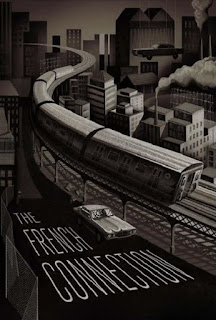The French Connection
UK Release Date: 27 December 1971
Certification: 18Director: William Friedkin
Cast: Tony Lo Bianco, Marcel Bozzuffi, Gene Hackman, Bill Hickman, Frédéric de Pasquale, Fernando Rey, Roy Scheider
Rating: 68%
Review:
Two years prior to the release of esteemed horror The Exorcist, director, William Friedkin took to the streets of New York crafting a gritty crime thriller very much of its time. The French Connection picked up five Oscars at the 44th Academy Awards as well as introducing the world to Roy Scheider.
The French Connection is complete with sequences of great quality action, a predecessor of the thrill of Michael Mann's Heat. Numerous devilishly designed and thought-out set-pieces unprecedented for 1971 that surprisingly still hold up. The intricate, prolonged car chase stands out. No dialogue plays as the film lets the sheer power of the engine and the overhead train tracks put the audience on edge.
The film often relies on its stunt work and sound editing to draw the audience in, evocative of the unmatchable chase. Unfortunately, that alone couldn't make me fully collect with the story unfolding in front of me on screen. The subdued moments of character and investigation didn't grip me, barring a tense stakeout on the docks, as much as the stylised action. Thus, quieter moments felt a little lacklustre compared to the rest of the narrative.
However, from a subjective point of view I unconditionally adored William Friedkin's experimental direction. The frantic panic of it all as it disorientates. The camera work comes across as a personification of drug influence tying into the story in a similar manner to Scorsese's GoodFellas. Breathless filmmaking that had me in some sort of trance as I bore witness to Friedkin's deft flair. The contrast in location was excellent from the cramped, overrun New York City to the picturesque Monegasque lakes and cobbled streets.
As a result the main take away from The French Connection for me is the anticipation to watch the rest of Friedkin's body of work. Specifically, Sorcerer and To Live and Die in L.A. thanks to his pulp quality and understanding of where to position the camera.




Comments
Post a Comment